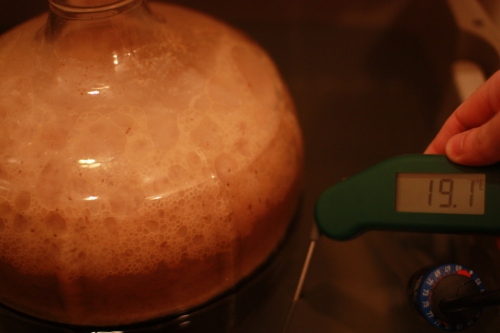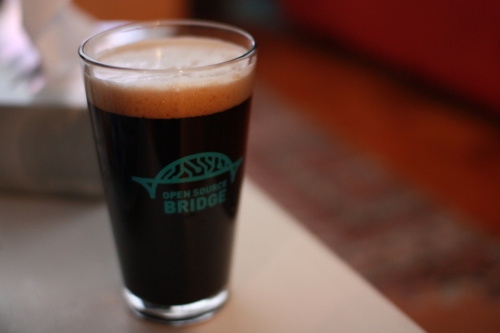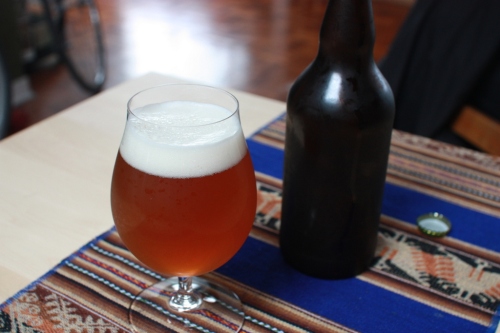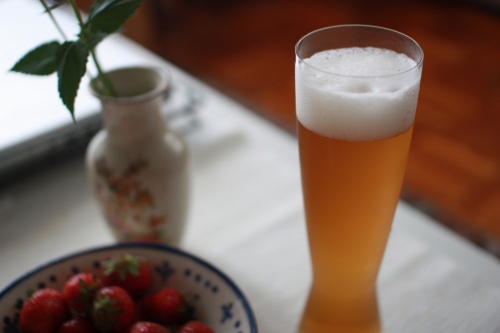This one was thrown together on a whim, inspired by Schneider Aventinus, but more of a dunkelweizen than a weizenbock due to brewery restrictions (lauter tun size) and my refusal to make two recipes in a row that require iterated mashing. The grain bill should hopefully give it some nice body and complexity. The only weizen yeast available at the LHBS was WLP351, which seems to be something of a mystery. Internet hearsay suggests it’s the black sheep of the weizen yeast family, producing more than just the banana/clove ester combo typical of the style. The vial was a bit old, so I made a small starter to get a higher cell count before pitching.
The mill gap was set a little wider than usual, because of the significant portion of wheat malt in the recipe, and extraction numbers suffered a little bit, presumably for this reason.
During extraction, a special guest photographer appeared. Hence the action shots below, in which I’m vorlaufing and taking the first runnings gravity sample, draining the first runnings into the boil pot, setting up the fly sparge, and then taking the first runnings gravity reading.
After sparging, I ended up at 72% extraction efficiency. As I mentioned earlier, this is a bit low, but not unexpected given the wider mill gap. It’s interesting to note that the use of wheat malt makes a significant difference in the volume of the mash. In past batches with 2.4kg of grain, the lauter tun was overflowing, but I had room to spare here.
You can see the pre-boil hot break and the heat exchanger at work post-boil above, as well a small part of the aftermath of brew day below. The photos don’t typically document it at all, but any brewer will tell you that brew day consists of 90% washing and 10% everything else.
Recipe Specifics
Batch Size: 9L
Boil Time: 75 min
Estimated OG (brewtoad): 1.058
Measured OG: 1055
Estimated FG: (brewtoad) 1.015
Estimated IBU (brewtoad): 27
Estimated SRM (brewtoad): 14
Estimated Extract Efficiency: 75%
Measured Extract Efficiency: 72%
Grain Bill
1400g Wheat Malt
500g Pilsner Malt
400g Munich I (6L)
100g Pale Chocolate
50g Crystal 120
Mash Schedule
Rest for 60 min at 67C, 2.7L/kg, heat to 74C for 5 min mashout, drain then sparge to 11L, top up to 13.5L.
Hops
25g Hallertau 3.5% AA @ 75 min
25g Hallertau 3.5% AA @ 10 min
Yeast
WLP351 Bavarian Weizen @ ~10 Million Cells/mL
Fermentation Notes:
11.02.15: Decanted starter wort and pitched yeast, water bath at 17C.
12.02.15: Water bath got above 18.5C, nice looking small krausen, notable sulphur.
13.02.15: Airlock still active, but krausen gone by the end of the day.
15.02.15: Not much activity, water bath temp held at 18-18.5C by upping ambient.
17.02.15: Airlock activity slow, water bath temp steady at 18.5C.
25.02.15: Bottled 7.8L with 68g of table sugar (3.1 Volumes).























